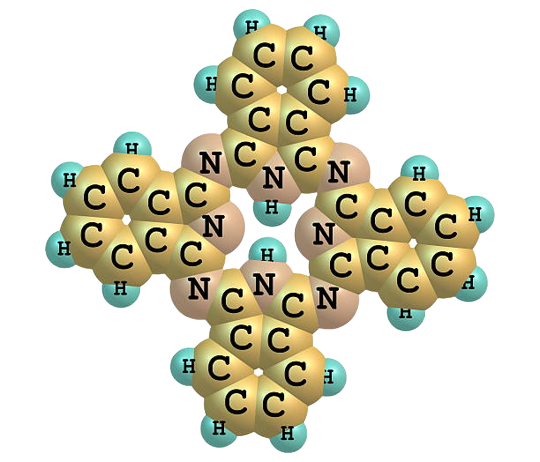Phtalocyanine

Overview
Phthalocyanine (H2Pc) is a large, aromatic, macrocyclic, organic compound with the formula (C8H4N2)4H2 and is of theoretical or specialized interest in chemical dyes and photoelectricity. It is composed of four isoindole units[a] linked by a ring of nitrogen atoms. (C8H4N2)4H2 = H2Pc has a two-dimensional geometry and a ring system consisting of 18 π-electrons.
History
In 1907, an unidentified blue compound, now known to be phthalocyanine, was reported. In 1927, Swiss researchers serendipitously discovered copper phthalocyanine, copper naphthalocyanine, and copper octamethylphthalocyanine in an attempted conversion of o-dibromobenzene into phthalonitrile. They remarked on the enormous stability of these complexes but did not further characterize them. In the same year, iron phthalocyanine was discovered at Scottish Dyes of Grangemouth, Scotland. It was not until 1934 that Sir Patrick Linstead characterized the chemical and structural properties of iron phthalocyanine.
Compounds
Phthalocyanines are structurally related to other tetrapyrrole macrocyles including porphyrins and porphyrazines. They feature four pyrrole-like subunits linked to form a 16 membered inner ring composed of alternating carbon and nitrogen atoms. Structurally larger analogues include naphthalocyanines. The pyrrole-like rings within H2Pc are closely related to isoindole. Both porphyrins and phthalocyanines function as planar tetradentate dianionic ligands that bind metals through four inwardly projecting nitrogen centers. Such complexes are formally derivatives of Pc2−, the conjugate base of H2Pc.
